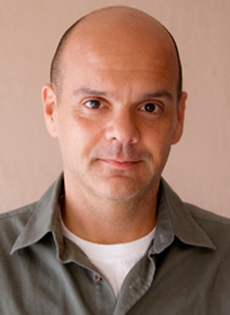
Bread of Life
Monday, October 10, 2022
*Dan Gonzalez
Jesus’ Bread of Life discourse can be found in John chapter 6. It includes this pivotal teaching: “I am the living bread that came down from heaven; whoever eats this bread will live forever; and the bread that I will give is my flesh for the life of the world.” (John 6:51)
Some argue that Jesus’ words here and at the Last Supper are to be taken symbolically — that he meant the bread to be a symbol of his body and the wine a symbol of his blood. They cite other instances where Jesus clearly speaks metaphorically such as when he claims to be a gate: “I am the gate. Whoever enters through me will be saved, and will come in and go out and find pasture.” (John 10:9)
Or a vine: “I am the vine, you are the branches. Whoever remains in me and I in him will bear much fruit, because without me you can do nothing.” (John 15:5)
Or when Nicodemus questions what it means to be born again: “Jesus answered, ‘Amen, amen, I say to you, no one can enter the kingdom of God without being born of water and Spirit.’” (John 3:5)
Or when the Samaritan woman thinks a bucket is required to draw living water from the well: “Jesus answered and said to her, ‘Everyone who drinks this water will be thirsty again; but whoever drinks the water I shall give will never thirst; the water I shall give will become in him a spring of water welling up to eternal life.’” (John 4:13-14)
A careful study of the passages above, however, shows that whenever Jesus used metaphors, his listeners seem to have been aware of it. Whenever there was confusion, Jesus clarified his instruction, as with Nicodemus and the woman at the well.
But when Jesus spoke about his own flesh being bread that is to be consumed, he was not speaking metaphorically; the passages do not allow for such an interpretation. Here’s why.
First, it is clear from his listeners’ response, that they understood him literally: “The Jews quarreled among themselves, saying, ‘How can this man give us [his] flesh to eat?’” (John 6:52)
At this point, if Jesus were speaking symbolically, he would have clarified his teaching and explained what he meant as he did with Nicodemus, the woman at the well and several other times before. He does not do this here, but rather reemphasizes what he said using stronger words.
Greek experts explain that, in the Bread of Life discourse, Jesus used various forms of the verb phago, which means to eat. However, after the Jews begin to express incredulity at the idea of eating Christ’s flesh, Jesus intensifies his language. In reiterating his command, he exchanges the word phago for trago which is a more intense word. It doesn’t simply mean eat, but rather to gnaw on or chew.
Jesus’ language was so graphic that even his own followers begin to express concern: “Then many of his disciples who were listening said, ‘This saying is hard; who can accept it?’” (John 6:60)
Wait a second. These are Jesus’ own followers. It is imperative that the disciples understand Jesus’ teaching correctly because in Luke’s Gospel, Jesus chooses 70 disciples and sends them out to preach, teach and heal. As emissaries of his message, it is assumed that Jesus would correct any misconceptions they had so the message they deliver is orthodox. But because of this teaching on bread, many of Jesus’ own disciples abandoned him: “As a result of this, many [of] his disciples returned to their former way of life and no longer accompanied him.” (John 6:66)
A good rabbi will never knowingly mislead his audience much less his own students. If Jesus was misunderstood, he would have called back those disciples who left him and clarified what he meant. However, no correction was made because no misunderstanding took place. Rather than calling his disciples back, Jesus turned to the 12 — his inner circle — and said: “Do you also want to leave?” (John 6:67)
Simon Peter answered him: “Master, to whom shall we go? You have the words of eternal life.” (John 6:68)
His response underscored their conviction in Jesus as the promised Messiah, that he alone was able to save them and that they took him at his word.
DEFINING THE TEACHING
The proper term for the doctrine that Jesus is really present in the Eucharist, and not symbolically, is the real presence of Christ in the Eucharist. The Council of Trent gave this definition:
“...in the sacrament of the most Holy Eucharist are contained truly, really and substantially the body and blood together with the soul and divinity of our Lord Jesus Christ, and consequently the whole Christ...” (Canons concerning the Most Holy Sacrament of the Eucharist, Council of Trent, Canon #1)
But just because it was defined at Trent, belief in the real presence of Christ in the Eucharist is not a medieval innovation. The early Church believed that the bread and wine really become the body and blood of Jesus.
WHAT THE EARLY CHURCH BELIEVED
From the beginning, the Church believed that the eucharistic elements of bread and wine become the glorified body and blood of Jesus. In his first letter to the Corinthians, St. Paul asks: “The cup of blessing that we bless, is it not a participation in the blood of Christ? The bread that we break, is it not a participation in the body of Christ?” (1 Corinthians 10:16)
In the same letter, Paul warns the nascent church in Corinth not to eat and drink unworthily: “Therefore whoever eats the bread or drinks the cup of the Lord unworthily will have to answer for the body and blood of the Lord.” (1 Corinthians 11:27)
St. Ignatius of Antioch (c. 35 – c. 108) was an early Christian writer, the third bishop of Antioch and a Father of the Church. While on his way to be martyred in Rome, he wrote seven letters. Scholars believe his epistle to the Romans was authored around 105 AD — the same time some New Testament books were still being written:
“I have no taste for corruptible food nor for the pleasures of this life. I desire the Bread of God, which is the flesh of Jesus Christ, who was of the seed of David; and for drink I desire his blood, which is love incorruptible.” (Ignatius of Antioch , Letter to the Romans 7:3)
St. Justin Martyr (c. 100 – c. 160) was a second century Christian teacher, author and, ultimately, martyr. His letter to the Roman Emperor Antoninus Pius argued against the persecution of Christians and provided him with an explanation Christian beliefs and practices:
“For not as common bread nor common drink do we receive these; but since Jesus Christ our Savior was made incarnate by the word of God and had both flesh and blood for our salvation, so too, as we have been taught, the food which has been made into the Eucharist by the Eucharistic prayer set down by him, and by the change of which our blood and flesh is nourished, is both the flesh and the blood of that incarnated Jesus.” (Justin the Martyr, First Apology, 66)
In his book Against Heresies (c. 180), St. Irenaeus of Lyons (c. 130 – c. 202) defends Christian beliefs against Gnosticism and its principal doctrine that the natural world is of evil origin:
“When, therefore, the mixed cup and the baked bread receives the Word of God and becomes the Eucharist, the body of Christ, and from these the substance of our flesh is increased and supported, how can they say that the flesh is not capable of receiving the gift of God, which is eternal life — flesh which is nourished by the body and blood of the lord ... receiving the Word of God, becomes the Eucharist, which is the body and blood of Christ...” (Irenaeus of Lyons, Against Heresies 5:2:2-3)
St. Cyril of Jerusalem (c. 313 – c. 386), a distinguished theologian, saint and Doctor of the Church, wrote Mystagogic Catecheses for the newly baptized preparing for Holy Communion:
“Do not, therefore, regard the bread and the wine as simply that; for they are, according to the Master’s declaration, the Body and Blood of Christ. Even though the senses suggest to you the other, let faith make you firm.” (St. Cyril of Jerusalem, Mystagogic Catecheses 4, 6)
These and several other quotes testify that belief in the real presence of Christ in the Eucharist has been historic Church teaching since the very beginning.


Comments from readers